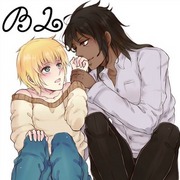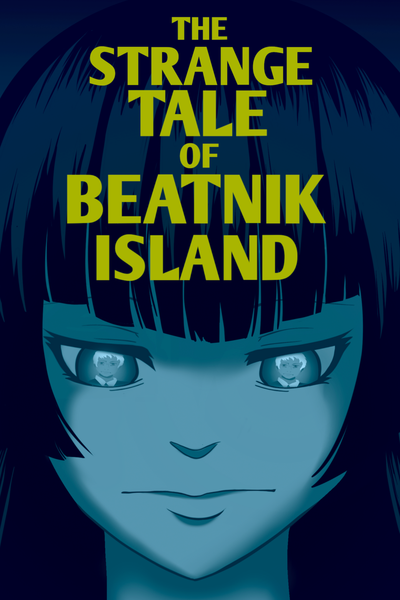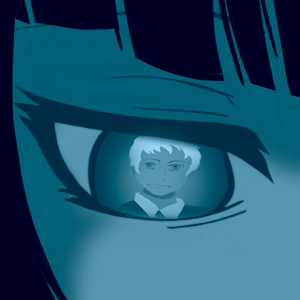I will attempt to keep this brief. While the history of this thing is interesting in its own right, a lot of it comes down to word of mouth, which I’m not comfortable dwelling on. Still, some of the context is definitely required here, if for no other reason than to pre-emptively kill some of the more obvious questions.
In early 2003, a post was made on the now-defunct Kurokubi-Nyaa, a Japanese message board primarily focused around discussing detective fiction. The author of the post, going by the handle of Itouikukuro, had decided to share a novel they themselves had written. They explained it was shopped around to different publishers without much success, in spite of their conviction that the novel was the best they had ever written. Without much to lose, they decided to turn to the public to judge for themselves.
I am to understand the responses were mixed. Some praised the characters and the overall story, while others were quick to point out the unbelievability of the mysteries and the reasoning required to solve them.
The novel itself was, of course, in Japanese. Itouikukuro had seemingly written the whole thing by hand, so the post itself was a document consisting of 300-something scanned pages. While it’s near-impossible to really know the amount of attention it ultimately got, or if it ever spread beyond Kurokubi, the one thing that you can be sure of is that nobody in the western world was aware of its existence. The internet was still in its infancy, and even Japanese majors probably had better things to do than roam around hubs for detective fiction. (Mystery was just as much of a niche then as it is now, unfortunately.)
That was, until 2013, when the story re-surfaced on Tumblr, of all places.
A user by the name of Neya11 claimed that they had a Japanese friend who still had the original scans in their possession, in spite of the message board being long-gone. Neya looked through the manuscript, liked it, and decided to take a shot at translating it. They began posting on their Tumblr blog. Most information I’ve just outlined for you apparently comes from it.
That is how ‘The Strange Tale of Beatnik Island’ saw the light of day in the English-speaking word.
The title is undeniably strange for a Japanese novel. It’s very likely that the title was altered by Neya in the process of translating it. Looking at the translation itself, it’s not hard to figure out the intentions behind the change – Neya worked very hard to make the thing as readable to a non-Japanese audience as possible. The use of honorifics appears to have been removed, characters make references to American culture (likely as a means of replacing whatever Japanese counterpart was used in that part of the text), and what few brand names are mentioned in it are definitely not of Japanese origins.
I don’t know how well that practice is frowned upon these days, and I don’t care – I’m just telling you what Neya did. Don’t shoot the messenger.
Besides, if there are things about the translation to be upset about it, there are far better reasons.
Here’s the thing, right? The full work seems to be 20 chapters long. Now, Neya most certainly did get to chapter 20. Seemingly in less than a month. Crazy, for a 300-something page work, isn’t it?
But that’s the kicker. Neya didn’t translate everything.
At the time, they cited lack of time and real-life commitments as the main reasons. Still, they wanted the story to get out in some way, so they skipped not only paragraphs or sections they believed weren’t integral to the story – but entire chapters. What their criteria was, I’ll never know. But the fact that they flat-out skipped the first two chapters probably says a lot about it.
As controversial of a decision as it might’ve been, the story did get a mall audience. The translation made some rounds in that small cross-section between people who liked mystery novels and people who liked Japanese anime/manga. I’m not sure what the reception to it was. It might’ve been one of those things where a bunch of people passed the link on to friends who ‘might’ve been interested’, and those friends either didn’t have the time or interest for it, leading to few clicks.
Whatever the case, the blog was gone by 2015. And the translation along with it.
Lost, found, then lost again.
And then found. Again.
A friend of mine, Gil, had come across the translation back in 2013 and copy-pasted the whole thing. He never got around to reading it, naturally.
But, after hearing me bitch about how I wished more Japanese locked room mysteries would be translated for God knows what time, he remembered the word doc rotting away on his hard drive and tossed it in my lap, along with all this bundle of history.
Of course, intrigued, I naturally read it like six months later.
Here’s the last thing you should know about Neya’s translation. Probably the most important part, as it explains why even the few that might’ve been interested in reading it likely never got that far into it.
It wasn’t very good.
Neya’s attempts to make the text more relatable to a western audience helped little when the sentence structure was awkward, some word choices flat-out bizarre, and some descriptions containing flat-out non-sequitors; hell, sometimes two sequential sentences flat-out contradicted each other!
I appreciate the work they did, I really do, and I’m sorry to put them on blast like this, but it truly, sincerely, could’ve done with at least one editing pass.
Which is where I come in.
And which is where we are now.
Because, for all the translation’s faults, I like the story. Sure, the fact that there are chunks missing is a shame, but what Neya did give us, I feel, is enough to put together a coherent story. You can usually pick everything you need to from the general context, in spite of the missing bits of information.
I also respect the time and effort someone put in to create a mystery of their own. There’s something kind of exciting of just having unknown people share their mystery stories. It’s a shame there aren’t, as far as I know, anyway, equivalents to Kurokubi; but I’m not sure they’d take up that much life here as it did in Japan.
I digress, though. The point is, I like the story, and I like the idea of this one random piece of work making it all the way here, over a decade after it was originally posted.
So, here’s to you, Itouikukuro.
The following is Neya’s translation, edited by me. I tried to fix up as much as possible without damaging the story, but I’m well-aware I have a particular style, and I have no doubt that style has, inevitably, made the story somewhat my own. The core of it, however, should still be there. I hope, at least. It’s all like a weird game of Telephone at this point.
Without further ado, please enjoy the reborn (but incomplete) tale of Beatnik Island!











Comments (0)
See all